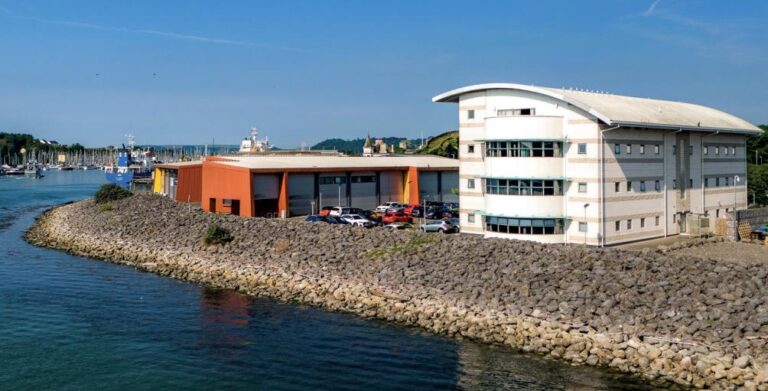2026 Business Rates Revaluation in the South West
As the 2026 revaluation approaches, many occupiers and owners across the South West are asking what it will mean for their rates bills from April 2026. Below is a practical overview of what’s changing, how different sectors in our region are likely to be affected, and the steps you can take now to manage exposure and budget confidently.
The essentials: what’s changing and when
- Scope and timing: The next rating list will take effect on 1 April 2026.
- Antecedent Valuation Date (AVD): The new rateable values (RVs) will reflect rental values as at 1 April 2024. For trading properties (hotels, pubs, leisure), the VOA will apply receipts/profits evidence aligned to that date.
- Draft values: The VOA typically releases draft RVs in autumn. Expect draft 2026 figures in late 2025, along with a proposed transitional relief scheme from government.
- Appeals: The Check, Challenge, Appeal (CCA) process remains the route to dispute valuations.
- New information duties: The post‑2023 system introduces ongoing duties to keep the VOA updated about property and occupier changes. Make sure you are registered for the VOA’s online service and have processes to meet notification and annual confirmation requirements.
Market backdrop in the South-West
Our region is diverse, spanning Bristol and the M4/M5 corridors through Gloucestershire, Wiltshire and Somerset, to Bath, Exeter, Plymouth, Dorset, Devon and Cornwall. The 1 April 2024 valuation date captures a market shaped by pandemic recovery, cost inflation, higher interest rates and shifting occupier demand.
Industrial and logistics
- Along the M4/M5, especially Greater Bristol and Gloucester, strong rental growth through 2021–2023 feeds into higher RVs. Even with some cooling by early 2024, the step‑up versus 2021 levels remains material.
- Exeter, Plymouth and wider Devon/Cornwall saw more modest growth, but tight supply means many units will still show increases, particularly for modern, well‑specified stock with good ESG credentials.
- Expect the steepest uplifts on prime small/mid‑box units; older secondary stock may see a smaller rise where obsolescence and location weigh on rents.
Offices
- Polarisation has deepened. Best‑in‑class, ESG‑compliant space in Bristol and Bath remains resilient; incentives aside, headline rents held up into 2024.
- Secondary offices are under pressure from hybrid working, higher running costs and compliance spend (e.g., EPC/MEES), which often translated into softer net effective rents by early 2024.
- Anticipate flat to lower RVs for older, non‑refurbished stock; stable to modest increases for Grade A space in core centres.
Retail and leisure
- High street retail across many South-West towns stabilised compared with 2020–2021, but rental tones in secondary parades often remained subdued at April 2024.
- Retail warehousing generally outperformed traditional high street during the period, so some schemes may see RV uplifts.
Hospitality and visitor economy
- Hotels, pubs and leisure are valued on trading potential (fair maintainable turnover/profit). Many assets saw top‑line recovery through 2023 with strong leisure demand in coastal and heritage destinations, but margins were constrained by energy, wage and food cost inflation.
- Outcomes will vary: well‑trading coastal hotels and destination venues could see higher assessments; businesses still recovering or exposed to cost headwinds may not.
Specialist and public sector
- Healthcare, education, airports/ports and utilities often follow contractor’s or receipts‑based approaches. Scheme‑by‑scheme evidence matters; areas linked to major infrastructure may have seen localised effects on demand and rents.
Who is most likely to see movement?
- Likely to rise: Modern industrial/logistics, retail warehousing, prime Grade A offices.
- Mixed/flat: Secondary high street retail; some provincial offices; older industrial where functional obsolescence is a factor.
- Variable by trading: Hotels, pubs, leisure – outcomes hinge on turnover and profit evidence at/around the AVD.
Your actual bill also depends on multipliers, any transitional scheme, and reliefs. It’s possible for RVs to increase while the payable bill is capped by transition.
Reliefs and mitigations to factor in
- Small Business Rate Relief (SBRR): Still critical for lower RVs; thresholds and tapers for 2026/27 not yet announced.
- Retail, Hospitality and Leisure (RHL) relief: Currently 40% but ceasing from 01 April 2026, to be replaced by permanently lower multipliers.
- Improvement Relief: Up to 12 months relief for qualifying property enhancements introduced in the current cycle.
- Empty property, charitable and rural reliefs: Review eligibility and timing.
- Material Change of Circumstances (MCC): Still available for physical/environmental changes, but not for general economic factors.
How we can help
- Data and compliance: VOA registration and assistance with Duty to Notify
- Draft list: review when draft RVs are released; create CCA action plan
- Appeals and negotiation: Constructing robust rental/trading cases, allowances for obsolescence, access/servicing constraints and quantum
- Relief optimisation: SBRR, improvement relief and exemption strategies
Talk to us at [email protected] for expert advice and help with your business rates.




